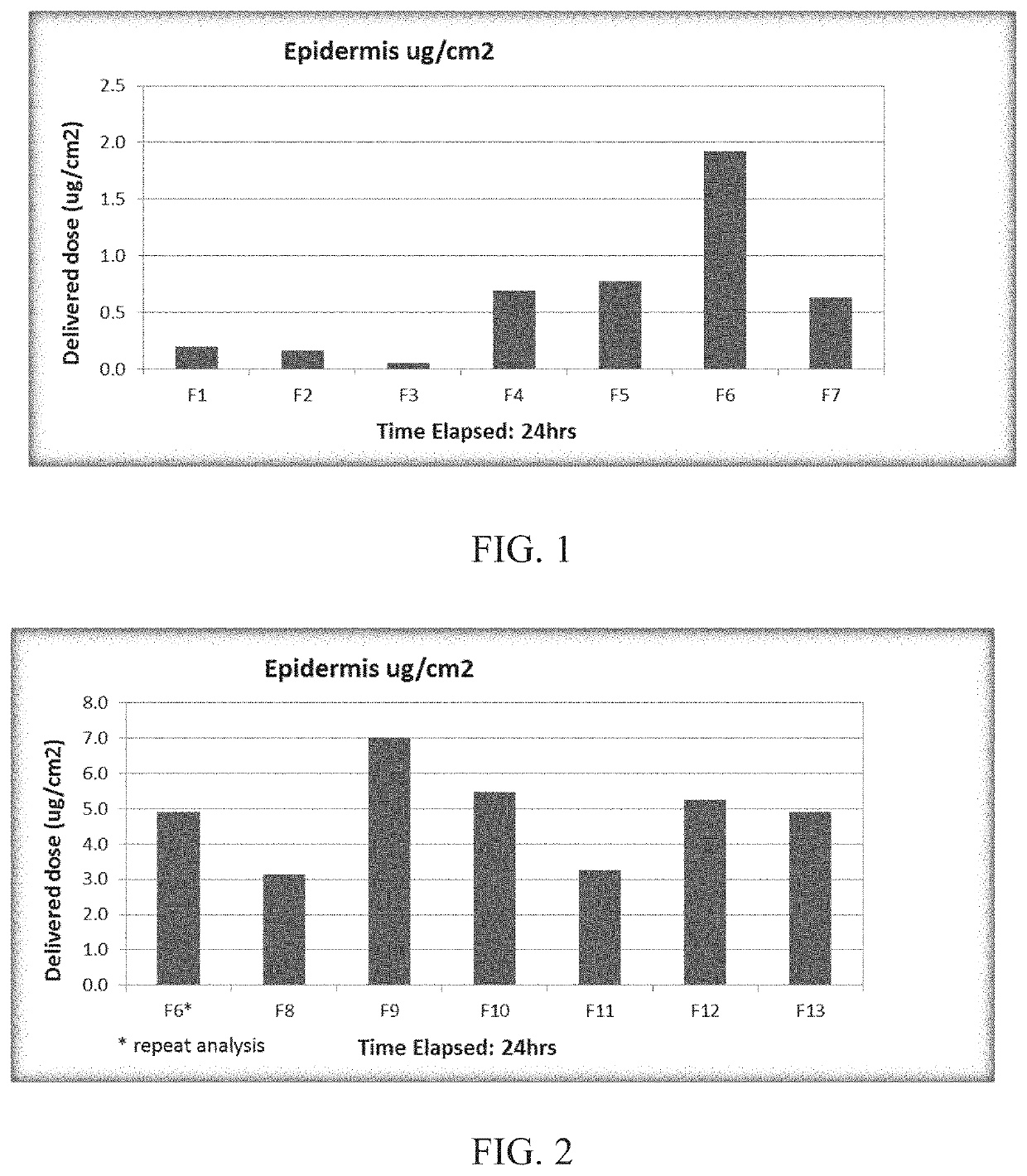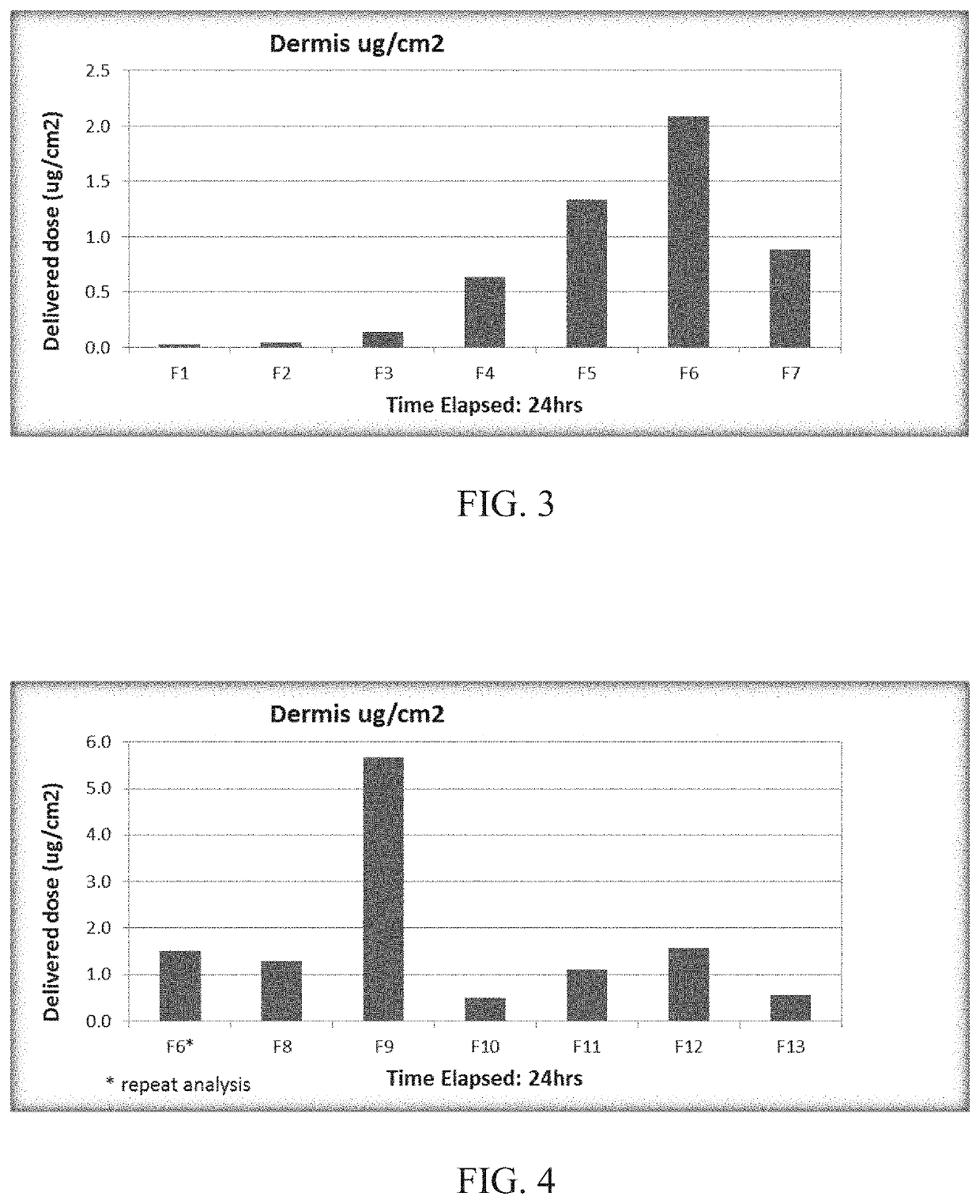Use of Antineoplastic Agents to Stimulate the Immune System for Treatment of Cancer
an antineoplastic agent and immune system technology, applied in the field of cancer treatment, can solve the problems of significant undesired side effects for patients, and achieve the effect of reducing or eliminating tumors
- Summary
- Abstract
- Description
- Claims
- Application Information
AI Technical Summary
Benefits of technology
Problems solved by technology
Method used
Image
Examples
example 1
Size, SSA, and Bulk Density Analysis of Paclitaxel Particles
[0260]The particle size of the paclitaxel particles lots used in the formulas listed in Table 1 (example 2) and Table 7 (example 3) were analyzed by the following particle size method using an ACCUSIZER 780:
[0261]Instrument parameters: Max. Concentration: 9000 particles / mL, No. containers: 1, Sensor Range: Summation, Lower Detection Limit: 0.5 μm, Flow Rate: 30 mL / min, No. Analysis pulls: 4, Time between pulls: 1 sec, Pull volume: 10 mL, Tare Volume: 1 mL, Prime volume: 1 mL, Include First Pull: Not Selected.
[0262]Sample preparation: Placed a scoop of paclitaxel particle API into a clean 20 mL vial and added approximately 3 mL of a filtered (0.22 μm) 0.1% w / w solution of SDS to wet the API, then filled the remainder of the vial with the SDS solution. Vortexed for 5-10 minutes and sonicated in a water batch for 1 minute.
[0263]Method: Filled a plastic bottle with filtered (0.22 μm) 0.1% w / w SDS solution and analyzed the Backg...
example 2
Hydrophobic Topical Compositions of Paclitaxel Particles with Hydrophobic Carriers
[0267]Anhydrous hydrophobic topical compositions of paclitaxel particles with hydrophobic carriers are listed in Table 1.
TABLE 1ComponentFormula Number(% w / w)F4F5F6F7F8F9F10F11F12F13ABCPaclitaxel1.01.01.01.00.52.01.01.01.01.00.50.50.5ParticlesFOMBLIN HC04———15.0 —————————Mineral Oil USP10.0 —5.0—5.05.0———————ST-Cyclomethicone—5.013.0 —13.0 13.0 13.0 13.0 18.0 15.0 qs adqs adqs ad5 NF(Dow Corning)100100100Oleyl Alcohol—5.0—————1.0————5.0Isopropyl—5.0————5.01.0—3.0—35 5.0Myristate NFDimethicone——————————5.05.05.0Fumed Silica——————————5.55.52.8Cetostearyl————————0.5————Alcohol NFParaffin Wax NF5.05.05.05.05.05.05.05.05.05.0———White Petrolatumqs adqs adqs adqs adqs adqs adqs adqs adqs adqs ad———USP (Spectrum)100100100100100100100100100100
[0268]Procedure for preparing F4-F13: Prepared a slurry of the paclitaxel particles with a portion of the cyclomethicone (or mineral oil (F4) or FOMBLIN (F7)). Heated the...
example 3
Dose-Rising, Safety, Tolerability and Efficacy Study for Cutaneous Metastases
[0286]The following ointment formulations shown in Table 7 were prepared for use in cutaneous metastasis studies.
TABLE 7ComponentFormula No.(% w / w)F14 (0.15%)F15 (0.3%)F16 (1%)F17 (2%)Paclitaxel0.150.31.02.0NanoparticlesMineral Oil USP5.05.05.05.0ST-Cyclomethicone13.013.013.013.05 NF (DowCorning)Paraffin Wax NF5.05.05.05.0White Petrolatumqs ad 100qs ad 100qs ad 100qs ad 100USP (Spectrum)
[0287]The formulas listed in Table 7 containing paclitaxel nanoparticles were manufactured each in a 6 kg batch size. The formulas were then packaged in 15 gm laminate tubes.
[0288]The manufacturing processes for lots F14, F15, and F16 were as follows: The petrolatum, mineral oil, paraffin wax, and a portion of the cyclomethicone were added to a vessel and heated to 52±3° C. while mixing with a propeller mixer until melted and homogeneous. The paclitaxel nanoparticles were added to a vessel containing another portion of cyclo...
PUM
| Property | Measurement | Unit |
|---|---|---|
| mean particle size | aaaaa | aaaaa |
| specific surface area | aaaaa | aaaaa |
| time | aaaaa | aaaaa |
Abstract
Description
Claims
Application Information
 Login to View More
Login to View More - R&D
- Intellectual Property
- Life Sciences
- Materials
- Tech Scout
- Unparalleled Data Quality
- Higher Quality Content
- 60% Fewer Hallucinations
Browse by: Latest US Patents, China's latest patents, Technical Efficacy Thesaurus, Application Domain, Technology Topic, Popular Technical Reports.
© 2025 PatSnap. All rights reserved.Legal|Privacy policy|Modern Slavery Act Transparency Statement|Sitemap|About US| Contact US: help@patsnap.com



